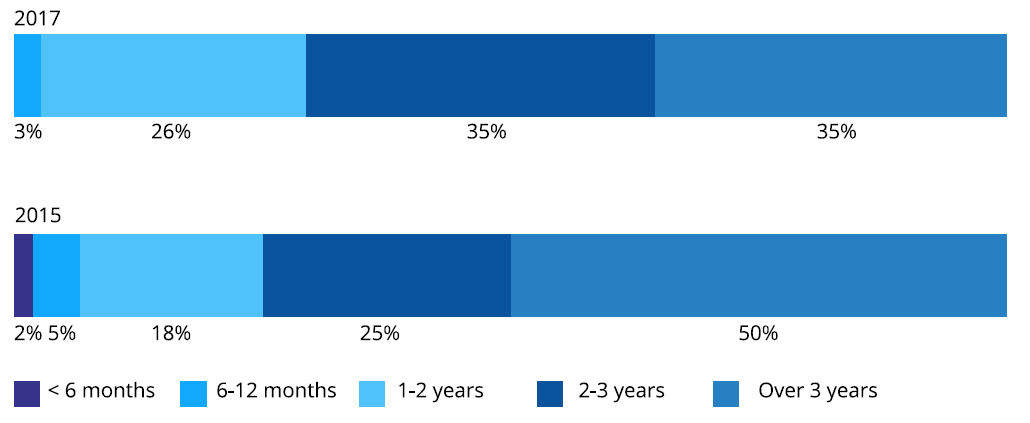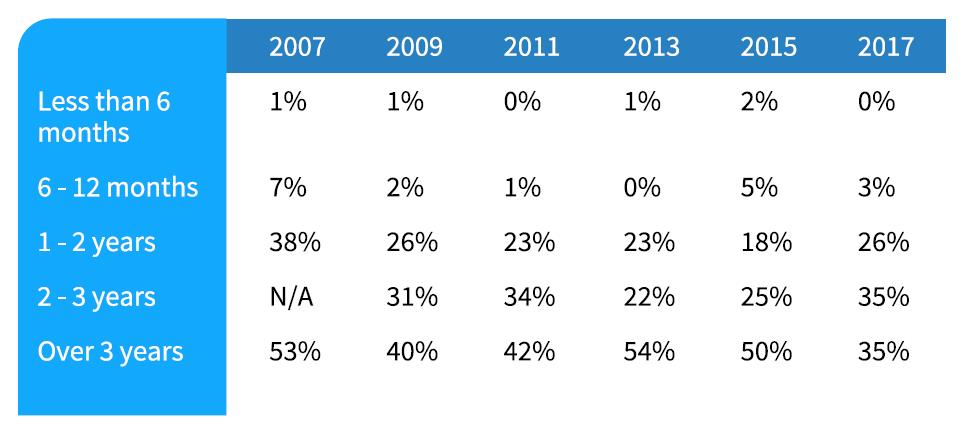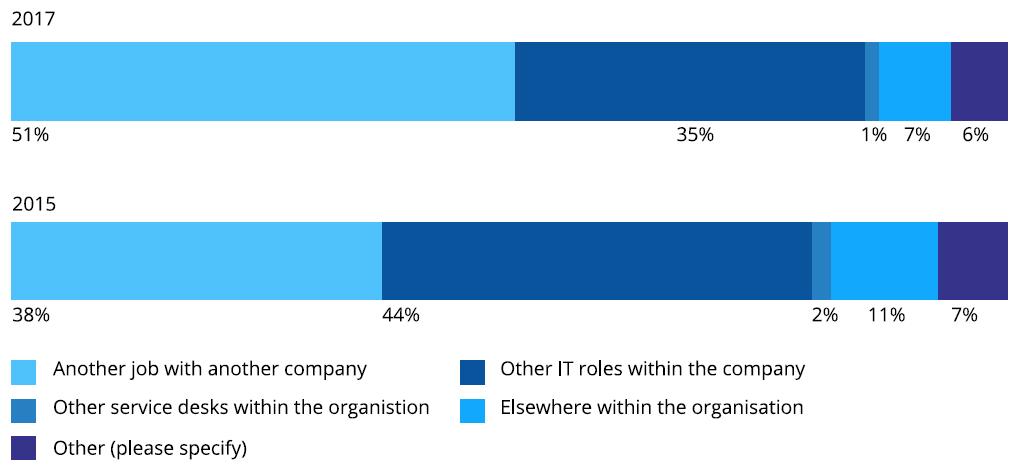
Does the ITSM Industry Have an IT Service Desk Staffing Issue?
In the SysAid eBook “Skills and Capabilities Required of a 2020 ITSM Professional,” various industry experts talk about the requirements for (not to mention availability of) suitably-skilled IT service desk agents based on the evolving role of IT support. They included the need for different personal skills and capabilities to meet greater customer expectations and demands. But is this just one dimension of the staffing issues for IT service desks, where the other is the potential loss of seasoned service desk staff from the IT support industry?
Are you concerned about the ongoing availability of suitable IT service desk staff? Well, I think you should be! Everywhere I look I seem to stumble across statistics that paint a worrying picture about service desk staffing – even with the expected staffing impact of artificial intelligence (AI).
A recent Gartner Newsroom press release stated that: “Gartner predicts that, by 2020, 75 percent of organizations will experience visible business disruptions due to infrastructure and operations (I&O) skills gaps, which is an increase from less than 20 percent in 2016.” I wonder how many of these will also suffer from a shortage of suitable IT service desk people and skills?
Then there are political factors that are making it harder to recruit IT staff across borders. But don’t get me started on this one.
What about the people who are currently working in IT and on the IT service desk – how do they find their work and working environment?
Working in IT Is Getting Harder
The 2017 ITSM.tools “Future of ITSM” survey offered two scary results for anyone trying to recruit and retain IT staff:
- 82% of respondents believe that working in IT will get harder over the next three years, and
- Only one in four respondents feel that their efforts and value are sufficiently recognized by management.
It’s not a good mix for those wanting to recruit and retain people.
The survey was anonymous, but targeted at IT service management (ITSM) pros, so if we assume that this covers the feelings of anyone who works in an ITSM role – what would the scores be like for just those who work in IT support roles? You’d probably expect the results to be even more extreme in one of the most pressurized jobs in IT.
Thankfully, the Service Desk Institute (SDI) has some insight into IT service desk staffing…
Profiling IT Service Desk Staffing
An SDI survey – the Service Desk Benchmarking Report 2017 – sheds light onto the current state of IT support staff retention in the UK (assumed because many SDI members are UK-based).
Let’s start with an observation related to the average length of service of IT service desk staff…
Observation 1: Service Desk Staff Length of Service Is Shortening
The SDI report sums this up pretty well:
“Since 2015, there has an obvious shift in the average life of a service desk analyst, with 15% fewer staff staying over 3 years, making it equal to the 35% of respondents who identified the average length of service of an analyst is 2 to 3 years. Since 2013, the average length of service of between 2 to 3 years has increased by 13% indicating that an average length of service of between 2 to 3 years has become the most recent trend.”
So, there’s good news and bad news for service desk employers:
- The good news – IT service desks have seen a reduction in short-lived employees, with more organizations seeing service desk agents staying in service desk roles longer.
- The bad news – the number of organizations with longer-term service desk agents is declining.
What is the average length of service of Service Desk Analysts?

Source: SDI, Service Desk Benchmarking Report 2017
There is, of course, nothing wrong with losing service desk staff – we should want people to better themselves. And, if they stay within the organization, it should benefit the organization too.
It reminds me of a source-unknown “management funny”:
CIO: “What if we invest in our people and they leave?” CEO: “What if we don’t and they stay?”
And a great Richard Branson thought that he tweeted:
Train people well enough so they can leave, treat them well enough so they don’t want to http://t.co/QHONOZYXEy
— Richard Branson (@richardbranson) March 27, 2014
Both clearly reflect the delicate balance between improving staff, retaining staff, and realizing that good people will eventually move on to bigger and better things.
To consider this change in staffing demographics further, let’s look at the historical survey/report data:
What is the average length of service of Service Desk Analysts?

Source: SDI, Service Desk Benchmarking Report 2017
The above table shows that the percentage of longer-term service desk agents is sadly at its lowest level since this SDI survey started in 2007.
Observation 2: The Changing Profile of Service Desk Leaver Destinations
It’s another way to look at this. People will, and do, leave. But where do they go, and do we know what they do next?
Could IT service desks be losing their seasoned staff to different careers in greater numbers than ever? And are organizations not benefitting from the time spent by, and the experience of, agents on the service desk – with people exiting the company not just the service desk team?
When people on permanent contracts leave the service desk, where do they go?

Source: SDI, Service Desk Benchmarking Report 2017
The SDI report, in analyzing the above chart, states that:
“There has been a significant increase in the number of analysts who choose to leave the organization completely, increasing from 38% in 2015 to 51% in 2017. This is the only category to have seen an increase.”
The report’s author, Scarlett Bayes, then goes on to offer possible causes:
“There may be several factors that contribute to this; for example, the analyst may move to a different role within another company or leave as the organization did not provide the right working environment for the analyst. This could be related to a recognized global trend, where Y-Generation staff are increasingly becoming more mobile in their working lives and making employment choices based on their personal needs around supporting technologies, organizational culture, flexible working hours, or technology flexibility like bring your own device. Alternatively, there may not be adequate career progression opportunities. As such, an analyst may be inclined to move around until they are satisfied with what their organization can offer them.”
This rise in organization departures is interesting when looked at in the context of the increase in the number of IT service desks that now operate employee morale surveys – 66% in 2017, up from 35% in 2015. You can read more on that in my earlier blog: “Why Is IT Service Desk Staff Morale Finally Important?”
Putting two and two together, and hopefully not getting five, it does make sense for the increase in staff morale surveys to be connected to the increasing level of IT service desk staff losses.
And, mixing everything together, it makes me think that IT service desks are losing valuable staff – especially staff that will be valuable as the expected evolution of IT support requires greater skills and capabilities from service desk agents.
So, What Happens to These Organization Leavers?
Unfortunately, most organizations will have little insight into this – given that employees aren’t obligated to say where they are leaving for, let alone the new role they’ll be taking. So, asking service desk managers what usually happens to their departing staff is limited to scenarios where the employee takes up another role within the organization – a total of 43% in the SDI survey.
Thus, we’ve reached a brick wall with the data we have at hand. But I’d love to understand more about what happens when people leave an IT service desk and the organization. Are they leaving just the organization or the IT service desk role?
I’d love to know your thoughts and experiences. Please let me know in the comments.






